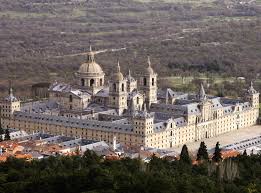3 Books to Read Before Going to Mexico
Posted on February 5th, 2015by
In Spanish | Leave a Comment »

Photo via Kevin Dooley/Flickr
Understanding the culture and history of a place like Mexico may seem easy initially, but don’t judge a book by its cover. There is so much more to Mexico that what you see in travel brochures or cheesy depictions in the media. Make the most out of your trip, and check out these novels before you leave – they’ll help you better understand a country that has so much to offer, yet has been so often overlooked.
A Visit to Don Otavio: A Traveller’s Tale from Mexico by Sybille Bedford
The first on our list of books to read is a travel novel, which explores the author’s experiences in a post World War II Mexico. An English woman who comes from money, she is eager to see what the world has on offer, and Mexico is her destination of choice. What follows is a story of a young woman’s exploration of food, tumultuous history, the Spanish language and a new land, all unlike anything she was familiar with in Europe.
Sybille Bedford, herself, describes the novel as semi-fiction, purely because when she was there, she took very, very few notes and wrote the entire novel after her time in Mexico had finished. Perhaps some elements of the book can be seen with a rose-tint to them, and perhaps some of the descriptions are tainted with the influence of memory, but that’s what makes the book a delight to read.
The book itself is made up of short stories or essays, that read a bit like a patchwork quilt of Bedford’s time in Mexico. Some of the stories, like the one of bags stolen by gunmen on donkeys or the invitation to a wealthy home and fabulous dinner party, seem too good and too funny to be true. Bedford captures the feeling and spirit of Mexico in her careful and reflective writings on her time there, and the novel will both entertain you and impress upon you how Mexico has developed into what it is today.
Did we like it?
4 out of 5 stars
Down the Rabbit Hole by Juan Pablo Villalobos
One of our stranger (and shorter, at only 70-ish pages long) choices on this list really takes liberty with the narrative voice. Villalobos’s novella is told through the eyes of a 7-year-old boy; the son of an infamous drug kingpin, who is kept imprisoned in his home as we learn of his life and of the things that make up his world view.
The narrator tells us about Mexico, through its food, its culture and its drug scene; of course you have to allow for questioning as a 7-year-old cannot always be completely believed, but the tale is told well, and really sucks you in. The author seems to ask the reader to see the faults in missing the bigger picture throughout this novella, and to look at the information we are not given as much as the information we are.
This story teaches us a bit about how drugs and gangs have influenced present day Mexico and because of this, it isn’t a particular light or uplifting read. It does have merit, in the ways it brings to light the problems and issues that exist, as well as nod to the past, with character names written in Nahuatl, Mexico’s indigenous language. An interesting read, this book won’t take you too long to finish, but will stick with you long after you’ve put it down.
Did we like it?
4.5 out of 5 stars.
The Labyrinth of Solitude by Octavio Paz
This book is considered a classic, and one of our longest books on the list. Essentially, it’s a book of essays that focuses on Mexican identity and humanity’s solitude. Paz takes the idea of solitude, a human condition, and uses its role in Mexican identity to explain the way the country acts, celebrates, loves, governs, and lives.
The book also dives into Mexican history, focusing on the country’s historic connection to Spain as well as the role its indigenous people played while forming the country as a whole. Paz discusses the political history of Mexico and how battles fought in the past still affect the identity of the people today.
Easily read in pieces, it can be a bit heavy at times, but it will definitely paint a well defined picture of Mexican culture and society; focusing on what has come before and what will continue to come long after the novel is finished. Paz enlightens the viewer, making it a novel that will truly help you understand what Mexico is all about.
Did we like it?
4 out of 5 stars.
***
So now you’ve read more about the history, the food, the culture and all of the beautiful insanity Mexico has to offer, why not try learning the language? Spanish is a beautiful language that will come in handy in many places, not just Mexico! Why not contact us now and see what courses are available?





 1. Alhambra
1. Alhambra 2. Mezquita de Cordoba
2. Mezquita de Cordoba
 4. Sagrada Família
4. Sagrada Família 5. Ibiza
5. Ibiza 6. Cuenca
6. Cuenca 7. Aqueduct of Segovia
7. Aqueduct of Segovia 8. La Concha
8. La Concha 9. Palacio Real de Madrid
9. Palacio Real de Madrid 10. Guggenheim Museum
10. Guggenheim Museum




